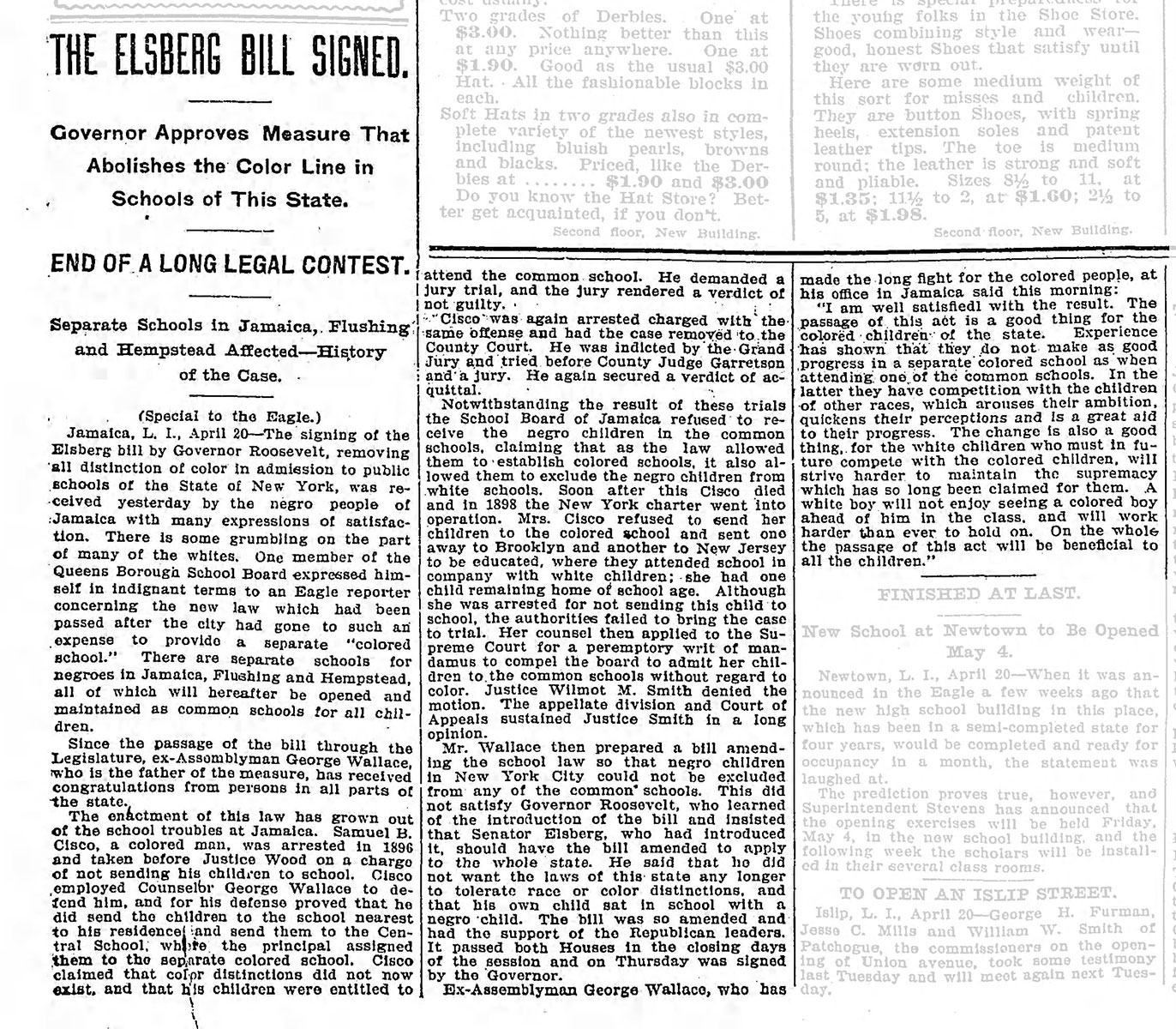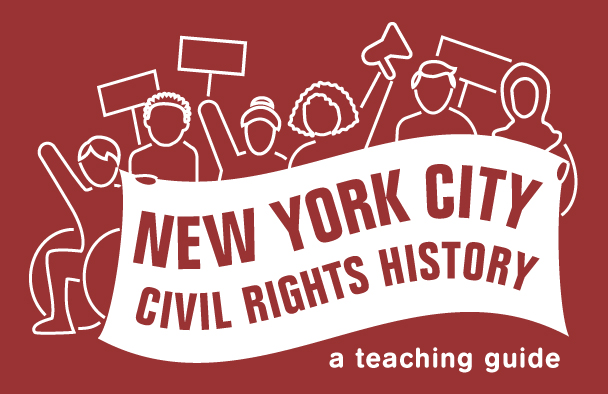The Elsberg Bill Signed

Date: Apr 20, 1900
Caption: This newspaper clipping describes the New York bill that ended legal segregation in schools. It was called the “Elsberg Bill” because it had been proposed by Senator Elsberg.

Mrs. Cisco’s activism brought attention to segregated schooling in New York, and the state adopted a new law that ended legal segregation in schools. This legislation was regularly referred to as the “Elsberg Bill” because state Senator Nathaniel Elsberg introduced the bill. This Brooklyn Daily Eagle story narrates the events leading up to the bill’s passage, different responses after its signing, and the response of Mrs. Cisco’s attorney George Wallace.
Categories: Queens, parent activism, K-12 organizing
Tags: racist segregation, court cases, Black people, school facilities, women's activism, legislation
This item is part of "Elizabeth Cisco Resisting Segregation in Queens" in "Black and Latina Women’s Educational Activism"
Item Details
Date: Apr 20, 1900
Source: Brooklyn Daily Eagle via newspapers.com
Copyright: Public domain
How to cite: “The Elsberg Bill Signed,” in New York City Civil Rights History Project, Accessed: [Month Day, Year], https://nyccivilrightshistory.org/gallery/elsberg-bill-signed.
Questions to Consider
- George Wallace, the attorney who represented the Cisco family throughout their legal battle for desegregation, is quoted at length in the end of the article. What was he saying here? How would you put it in your own words?
- Although this law was passed over 100 years ago, New York City schools still remain some of the most segregated in the country. Why do you think that is? How might Wallace’s way of talking about the “Elsberg Bill” help explain why segregation continues?
- Although much of the article narrates Mrs. Cisco’s legal battles, there is not a single quote from her in the story? Why might that be? Why do you think the paper did not include her voice in the article?
References
How to Print this Page
- Press Ctrl + P or Cmd + P to open the print dialogue window.
- Under settings, choose "display headers and footers" if you want to print page numbers and the web address.
- Embedded PDF files will not print as part of the page. For best printing results, download the PDF and print from Adobe Reader or Preview.
